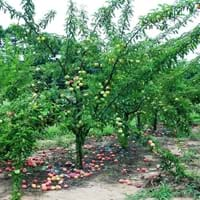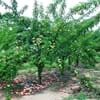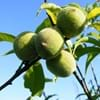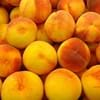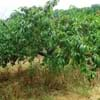Life Span
Perennial
Perennial
Origin
Not Available
North America, United States, Northeastern United States, Mid-Atlantic United States, Southeastern United States, North-Central United States, Central United States, South-Central United States, Canada
Types
European plum, Gages, Japanese plum
Autumn Flame, October Brilliance, Tiliford
Number of Varieties
Not Available
Habitat
Moist Soils, Sandy areas, Wet ground
Forests, Wide range of ecological site
USDA Hardiness Zone
5-8
3-9
Sunset Zone
2a, 2b, 3a, 3b, 4, 5, 6, 7, 8, 9, 10, 11, 12, 14, 15, 16, 17, 18, 19, 20, 21, 22
A2, A3, 1a, 1b, 2a, 2b, 3a, 3b, 4, 5, 6, 7, 8, 9, 14, 15, 16, 17
Habit
Upright/Erect
Oval or Rounded
Flower Color
Pink, White
Red
Flower Color Modifier
Bicolor
Bicolor
Fruit Color
Purple, Violet, Yellow, Red, Green, Purple, Burgundy, Bronze, Ivory
Red, Green, Brown
Leaf Color in Spring
Pink
Light Green
Leaf Color in Summer
Not Available
Green, Dark Green
Leaf Color in Fall
Not Available
Yellow, Red, Orange, Yellow green, Gold, Dark Red, Orange Red
Leaf Color in Winter
Light Green
Not Available
Leaf Shape
Oval
Maple shaped
Plant Season
Early Spring, Late Winter
Spring, Summer, Fall
Sunlight
Full Sun
Full Sun, Partial Sun
Type of Soil
Clay, Sandy
Clay, Loam, Sand
The pH of Soil
Acidic
Acidic, Neutral, Alkaline
Soil Drainage
Well drained
Average
Bloom Time
Early Spring
Early Spring, Spring
Tolerances
Drought
Wet Site, Soil Compaction
Where to Plant?
Ground
Ground
How to Plant?
Grafting
Seedlings, Vegetative Reproduction
Plant Maintenance
Low
Medium
Watering Requirements
Average Water Needs, Requires regular watering, Water daily during growing season, Water Deeply
Water Deeply, Water when top layer of soil becomes dry
In Summer
Moderate
Lots of watering
In Spring
Moderate
Moderate
In Winter
Average Water
Average Water
Soil pH
Acidic, Neutral, Alkaline
Acidic, Neutral, Alkaline
Soil Type
Clay, Loam, Sand
Clay, Loam, Sand
Soil Drainage Capacity
Well drained
Average
Sun Exposure
Full Sun, Partial Sun
Full Sun, Partial Sun
Pruning
Remove damaged leaves, Remove dead branches, Remove dead leaves
Remove dead branches, Remove dead leaves
Fertilizers
Nitrogen, Phosphorous
General garden fertilizer, No need to fertilize every year
Pests and Diseases
Red blotch
Anthracnose, Bleeding canker, Decline, Fomes root rot, Ganoderma root rot, Laetiporus root rot, Leaf spot, Powdery mildew, Tar spot, Verticillium Wilt
Plant Tolerance
Drought
Soil Compaction, Wet Site
Flowers
Yes
Insignificant
Flower Petal Number
Not Available
Single
Foliage Texture
Not Available
Medium
Foliage Sheen
Not Available
Matte
Attracts
Ants, Aphids, Beetles, Mites
Not Available
Allergy
Abdominal pain, Anaphylaxis, breathing problems, Hives, Swelling, Throat itching, Vomiting
breathing problems, Eczema, flushing of face, Hives, Low blood pressure, Oral cavity, Rapid Heartbeat, Runny nose, Watery eyes
Aesthetic Uses
Used for decorating walls, fences, gates, hedges, etc.
Showy Purposes
Beauty Benefits
Improve skin tone, Skin Problems
Not Available
Environmental Uses
Air purification, Shadow Tree
Air purification, Wildlife
Medicinal Uses
Bone strength, Brain disease, Cancer, Cellular Health, constipation, Diabetes, Digestion problems, Heart problems
Not Available
Part of Plant Used
Fruits
Whole plant
Other Uses
Cosmetics
Edible syrup, Used as Ornamental plant
Used As Indoor Plant
No
Yes
Used As Outdoor Plant
Yes
Yes
Garden Design
Edible, Fruit / Fruit Tree
Feature Plant, Shade Trees, Street Trees
Botanical Name
PRUNUS domestica 'Brooks'
ACER rubrum
Common Name
Plum
Northern Red Maple, Red Maple
In Hindi
बेर
लाल मेपल के पेड़
In German
Pflaume
Red Maple Tree
In French
prune
Red Maple Tree
In Spanish
ciruela
Árbol de arce rojo
In Greek
Δαμάσκηνο
Red Maple Tree
In Portuguese
ameixa
Árvore de bordo vermelho
In Polish
Śliwka
Red Maple Tree
In Latin
Plum
Rubrum Maple ligno
Phylum
Vascular plant
Magnoliophyta
Class
Magnoliopsida
Magnoliopsida
Family
Rosaceae
Aceraceae
Clade
Angiosperms, Eudicots, Rosids
Angiosperms, Eudicots, Rosids
Tribe
Not Available
Not Available
Subfamily
Amygdaloideae
Not Available
Number of Species
Not Available
Importance of Plum and Red Maple Tree
Want to have the most appropriate plant for your garden? You might want to know the importance of Plum and Red Maple Tree. Basically, these two plants vary in many aspects. Compare Plum and Red Maple Tree as they differ in many characteristics such as their life, care, benefits, facts, etc. Every gardener must at least have the slightest clue about the plants he wants to plant in his garden. Compare their benefits, which differ in many ways like facts and uses. The medicinal use of Plum is Bone strength, Brain disease, Cancer, Cellular Health, constipation, Diabetes, Digestion problems and Heart problems whereas of Red Maple Tree is Not Available. Plum has beauty benefits as follows: Improve skin tone and Skin Problems while Red Maple Tree has beauty benefits as follows: Improve skin tone and Skin Problems.
Compare Facts of Plum vs Red Maple Tree
How to choose the best garden plant for your garden depending upon its facts? Here garden plant comparison will help you to solve this query. Compare the facts of Plum vs Red Maple Tree and know which one to choose. As garden plants have benefits and other uses, allergy is also a major drawback of plants for some people. Allergic reactions of Plum are Abdominal pain, Anaphylaxis, breathing problems, Hives, Swelling, Throat itching and Vomiting whereas of Red Maple Tree have breathing problems, Eczema, flushing of face, Hives, Low blood pressure, Oral cavity, Rapid Heartbeat, Runny nose and Watery eyes respectively. Having a fruit bearing plant in your garden can be a plus point of your garden. Plum has showy fruits and Red Maple Tree has no showy fruits. Also Plum is flowering and Red Maple Tree is not flowering . You can compare Plum and Red Maple Tree facts and facts of other plants too.
